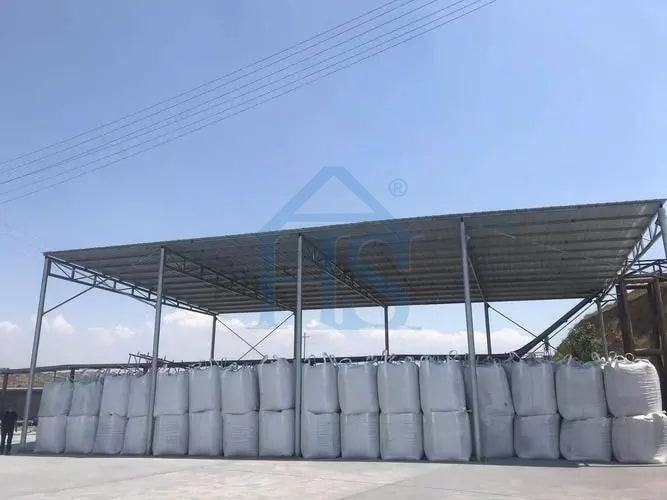The Production Process
The production of silica fume involves three main steps: obtaining raw materials, processing them in a furnace, and collecting the silica fume.
Raw Materials
The primary raw materials used in the production of silica fume are quartz, coal, and wood chips. Quartz is a naturally occurring mineral that contains high levels of silicon dioxide (SiO2). Coal and wood chips serve as the reducing agents required for the chemical reaction.
The Furnace
The raw materials are placed in an electric arc furnace, where they are heated to temperatures exceeding 2000°C. The intense heat causes the silicon dioxide in the quartz to react with the carbon from the coal or wood chips, forming silicon metal and carbon dioxide (CO2). As a result, a gas containing silicon monoxide (SiO) is released.
Collection of Silica Fume
The gas containing SiO is rapidly cooled, causing the SiO to react with oxygen (O2) in the air and form silica fume, which is composed primarily of ultrafine silicon dioxide (SiO2) particles. These particles are then collected using filters or other collection systems and packed for further use.
Applications of Silica Fume
Due to its unique properties, silica fume finds use in various applications, including concrete, refractory materials, and others.
Silica fume is widely used as an additive in concrete to improve its strength, durability, and resistance to chemical attacks. The addition of silica fume reduces the permeability of concrete, making it less susceptible to corrosion and other forms of degradation. It also enhances the mechanical properties of concrete, including compressive strength, tensile strength, and flexural strength.
Silica fume is an essential component in the production of refractory materials, which are used to line high-temperature furnaces, kilns, and reactors. Its high melting point and low thermal conductivity make it an ideal material for enhancing the thermal insulation and mechanical strength of refractories.
Other Applications
In addition to concrete and refractories, silica fume is used in various other applications, such as:
- Paints and coatings: It improves the anti-corrosion and weather resistance properties of paint and coating systems.
- Rubber and plastics: It enhances the mechanical and thermal properties of these materials.
- Ceramics: It improves the strength, hardness, and thermal stability of ceramic products.
- Electronics: It is utilized as a filler in microelectronics packaging to provide improved thermal conductivity and electrical insulation.
Environmental Impacts
The production of silica fume involves the generation of carbon dioxide (CO2) as a byproduct of the furnace reaction. However, the use of silica fume in concrete can offset these emissions by reducing the need for cement, a significant source of CO2 emissions. Furthermore, recycling silica fume as a valuable material prevents it from being disposed of in landfills, thus reducing waste.






